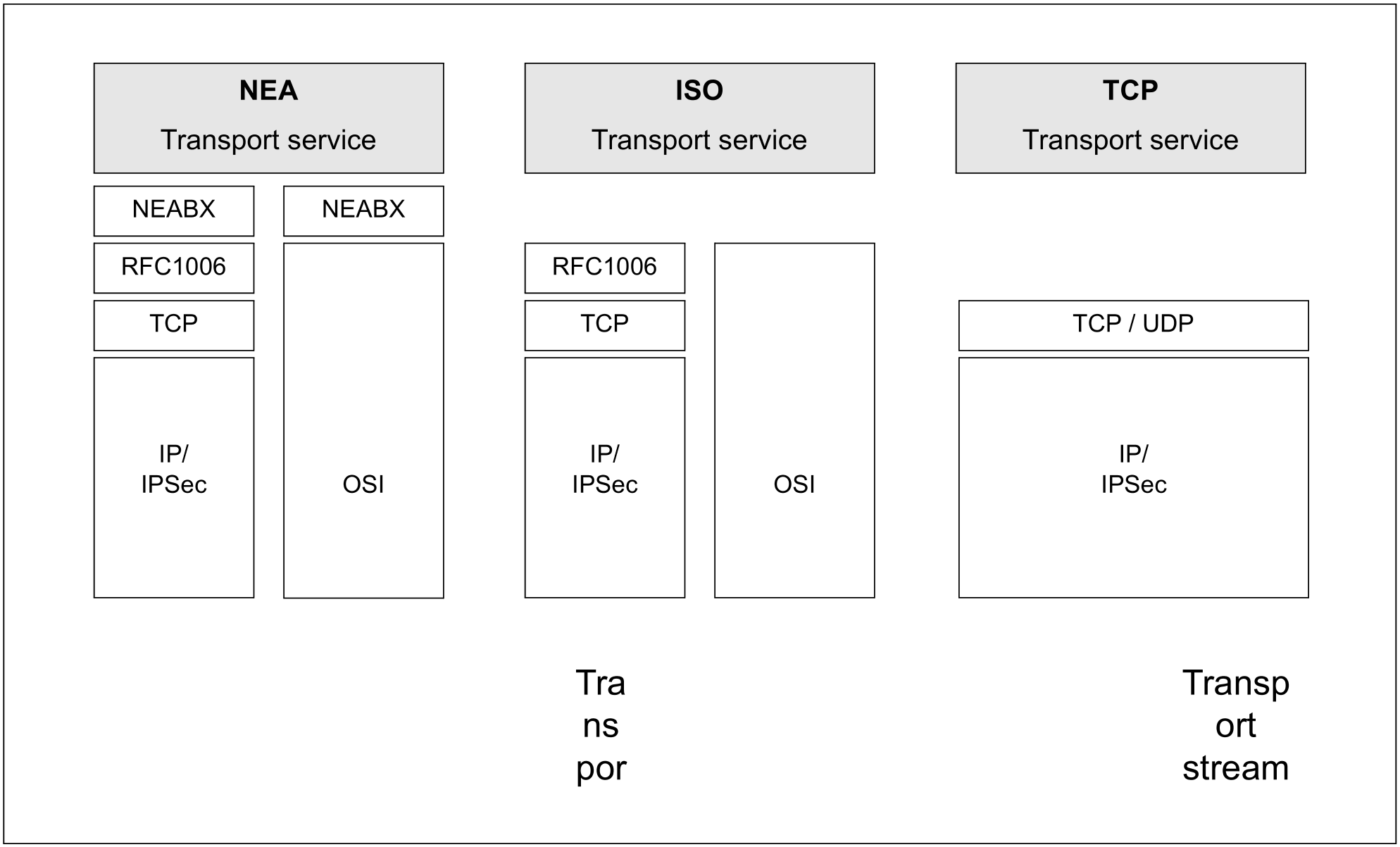The figure below provides an overview of the transport services which are supported and which network connections are provided through these.
Transport services supported
Connection-oriented and connectionless protocols
With regard to functionality, there are two types of protocols, namely connection-oriented and connectionless.
In the case of connection-oriented protocols (for example TCP in the TCP/IP architecture), a connection with two connection endpoints is established via the exchange of messages between two partners. When the data is transferred, facilities such as flow control, error code and error recovery may be available depending on the protocol. The connection is established either via the application or, in the case of a non-recoverable error, via the protocol.
Connectionless protocols (e.g. IP and UDP), by contrast, do not establish any connection points. The data is transferred via datagrams. There is issued no flow control and no error code if a datagram is lost. The type of protocol used depends on the desired application. This means that some protocols on the Application Layer permit connectionless transfers, whereas others require connection-oriented protocols.

